World Dairy Expo Seminars
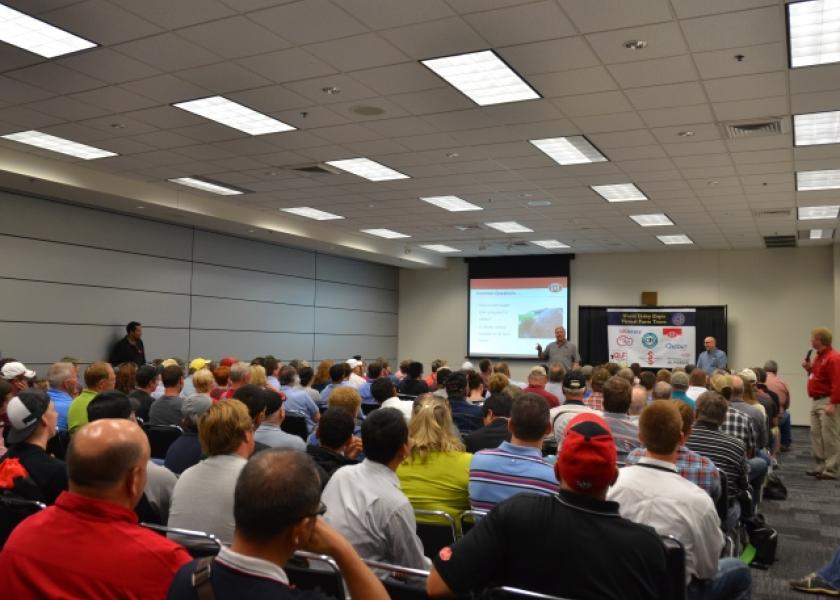
Each year, the brightest minds in the dairy industry showcase the latest in dairy cattle research and services during the annual World Dairy Expo Seminars. Free to Expo attendees, world-class speakers will be presenting on farm succession, feed waste, adding value to calves by breeding to beef, quality heifers, robotic barn design, apps for dairying, agroterrorism and lameness in dairy cattle.
Members of the American Registry of Professional Animal Scientists (ARPAS) and the American Association of State Veterinary Boards–RACE Program* (RACE) can earn continuing education credits for their attendence. All seminars will be available for viewing after they are presented at www.worlddairyexpo.com.
 TUESDAY, SEPTEMBER 29, 1:00 p.m.
TUESDAY, SEPTEMBER 29, 1:00 p.m.
“The Time is Right for a Succession Plan”
Dan Rupar, Attorney, Ruder Ware, L.L.S.C.
Sponsored By: Badgerland Financial
Continuing Education Credits: ARPAS (1), RACE (1)
While 78% of families intend to pass their business on to their children, only 34% have created a succession plan. Succession planning can help minimize surprises and future disagreements that arise from the highly charged atmosphere surrounding ownership transfer. The key to having a successful transition is starting the discussions early. This presentation is intended to open the conversation between owners and potential successors. Dan Rupar has considerable experience resolving the sensitive issues and complex legal matters that often go hand-in-hand when planning for the succession of your business. In his 23 years as a business attorney and estate planning professional, Rupar has worked with a number of farm families, assisting them in laying the foundation for future success.
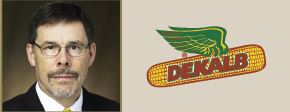 WEDNESDAY, SEPTEMBER 30, 11:00 a.m.
WEDNESDAY, SEPTEMBER 30, 11:00 a.m.
“Feed Refusals: Waste or Cost of Doing Business?”
Dr. J.W. Schroeder, Associate Professor and Extension Dairy Specialist, North Dakota State University
Sponsored By: DeKalb
Continuing Education Credits: ARPAS (1), RACE (1)
Efficiency in feed bunk management suggests the lower the refusal, the better, at least from an economical perspective. Feed costs represent the single largest variable expense of producing milk. Creating a well thought-out plan that includes correctly managing weigh-backs is an effective tool in controlling feed costs. Dr. J.W. Schroeder, associate professor and Extension dairy specialist at North Dakota State University, will discuss the issues around refused feed. His primary focus is on nutritional physiology for lactating and dry cows and heifer-rearing methods. He has published investigations of applied nutrition with byproduct feeds, pulse crops and oilseeds high in comega-3 fatty acids. Dr. Schroeder is a member of the I-29 Dairy Outreach Consortium and the American Dairy Science Association.
 WEDNESDAY, SEPTEMBER 30, 1:00 p.m.
WEDNESDAY, SEPTEMBER 30, 1:00 p.m.
“Adding Value to Calves by Breeding to Beef”
Jerry Wulf, Partner, Wulf Cattle
Sponsored By: Hubbard Feeds, Inc.
Continuing Education Credits: ARPAS (1), RACE (1)
Wulf Cattle is one of the largest genetics-to-rail beef operations in the U.S. with 1,500 registered Limousin and Lim-Flex females and 50,000 head of fed cattle marketed annually. In 2012, Wulf Cattle partnered with semen companies to launch their “Breeding to Feeding” program, which has sold more than 225,000 units of Limousin and Lim-Flex semen to dairies across the U.S. The farm also runs a successful “Calf Buy Back” program which allows dairymen to add value to their bull calves by producing superior crossbred beef calves. In this presentation, Wulf will share his successes in providing the dairy industry with value-added genetics through breeding dairy cows to beef, while supplying the beef industry with high quality feeder cattle to help fill feedyards and produce beef for consumers.

“Defining Factors That Create a Quality Heifer”
Dr. Michael Van Amburgh, Cornell University
Sponsored By: Land O’Lakes Animal Milk Products Co.
Continuing Education Credits: ARPAS (1), RACE (1)
What does it take to produce a “quality” heifer and how do we know this? These are the questions Dr. Mike Van Amburgh will address, focusing on factors related to calf inputs and management, expectations for performance and the cost/benefit relationship from birth through weaning. Dr. Van Amburgh’s research program focuses on understanding the nutrient requirements and development of dairy calves and heifers. His work has evolved into understanding factors in neonatal life that establish lifetime productivity functions and outcomes. Dr. Van Amburgh currently works as a professor in the department of animal science at Cornell University where he teaches multiple courses in dairy management. He also leads the development of the Cornell Net Carbohydrate and Protein System, a nutrition evaluation and formulation model used worldwide.
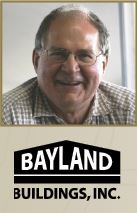 THURSDAY, OCTOBER 1, 1:00 p.m.
THURSDAY, OCTOBER 1, 1:00 p.m.
“Design Criteria for Robotic Milking Barns”
Jack Rodenburg, DairyLogix
Sponsored By: Bayland Buildings, Inc.
Continuing Education Credits: ARPAS (1), RACE (1)
Cow flow, traffic systems, feed and bedding delivery, manure removal, handling capabilities and dealing with transition and special needs cows are all a bit different in a successful robotic milking barn. This seminar offers practical expertise on barn layouts that minimize labor, optimize cow comfort and accommodate normal cow behavior. Jack Rodenburg will address both traditional, single box robots and double and multi-box systems. He has led more than 100 seminars on barn design and herd management. As a Canadian dairy Extension specialist for 34 years, he was there when the first commercial robotic milking systems in North America were installed. He recognized the potential of the new technology and has worked as a farm advisor, researcher and barn designer ever since.
 FRIDAY, OCTOBER 2, 11:00 a.m.
FRIDAY, OCTOBER 2, 11:00 a.m.
“Apps for Dairying: An Application for
Calving Management”
Dr. Gustavo Schuenemann, Associate Professor, College of Veterinary Medicine – Ohio State University
Sponsored By: Calf-Star
Continuing Education Credits: ARPAS (1), RACE (1)
Successful identification of the risk factors of calving related losses can be challenging. Applications for smart, touch-screen devices can help assess, in real time, several events occurring in dairy herds every day. Dr. Shuenemann will provide an example of this technology for calving management and discuss its pros and cons as well as the economic implications. His primary areas of research as associate professor and dairy Extension veterinarian at Ohio State University includes transition cow management with an emphasis on calving-related losses, dairy personnel performance and the use of risk assessment tools for decision making.
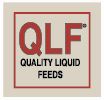 FRIDAY, OCTOBER 2, 1:00 p.m.
FRIDAY, OCTOBER 2, 1:00 p.m.
“Agroterrorism Threat Briefing and Roles of Law Enforcement”
Stephen Goldsmith, DVM, Weapons of Mass Destruction (WMD) Directorate-Biological Countermeasures Unit, FBI
Sponsored By: Quality Liquid Feeds, Inc.
Continuing Education Credits: ARPAS (1), RACE (1)
Agricultural terrorism is an attack targeting livestock and food crops. This seminar will describe the use of animal and crop diseases as warfare tools and how to indentify indicators and triggers. As a employee of the FBI and Army National Guard and Reserve veteran, Stephan Goldsmith, DVM, will discuss the role of law enforcement and agriculture agencies in the joint investigation of terrorist attacks against agriculture. He currently serves in the Weapons of Mass Destruction (WMD) Directorate-Biological Countermeasures Unit for the FBI as an agricultural terrorism subject matter expert. Previously, he served in the Hazardous Material Science Response Unit of the FBI Laboratory Division and was a field veterinary medical officer and Foreign Animal Disease (FAD) diagnostician with USDA-APHIS-Veterinary Services in Georgia, Bolivia and North Carolina. He also worked at the Bureau of Contagious and Infectious Diseases with the Florida Department of Agriculture State Veterinarian’s Office.
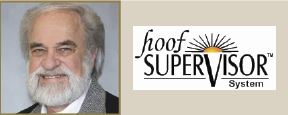 SATURDAY, OCTOBER 3, 11:00 a.m.
SATURDAY, OCTOBER 3, 11:00 a.m.
“Lameness in Dairy Cattle: Causes and Consequences”
Dr. J.K. Shearer, Professor, Iowa State University
Sponsored By: Hoof Supervisor
Continuing Education Credits: ARPAS (1), RACE (1)
Minimizing the impact of lameness on performance, profit and cow welfare requires early detection, prompt diagnosis and the application of effective therapy. Knowing the causes of lameness can help us define more effective control and prevention strategies. Dr. Shearer is a professor and Extension veterinarian for the College of Veterinary Medicine at Iowa State University. He currently serves as the chair of the Food Animal Working Group of the American Veterinary Medical Association (AVMA) Panel on Euthanasia and is a member of the AVMA Panel on Humane Slaughter. Dr. Shearer has received the AVMA Animal Welfare Award in 2011, and the Alpharma Award of Excellence from the American Association of Bovine Practitioners.







